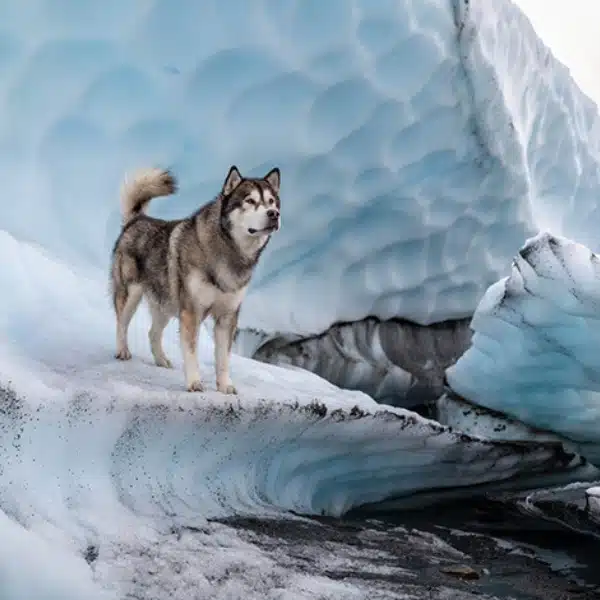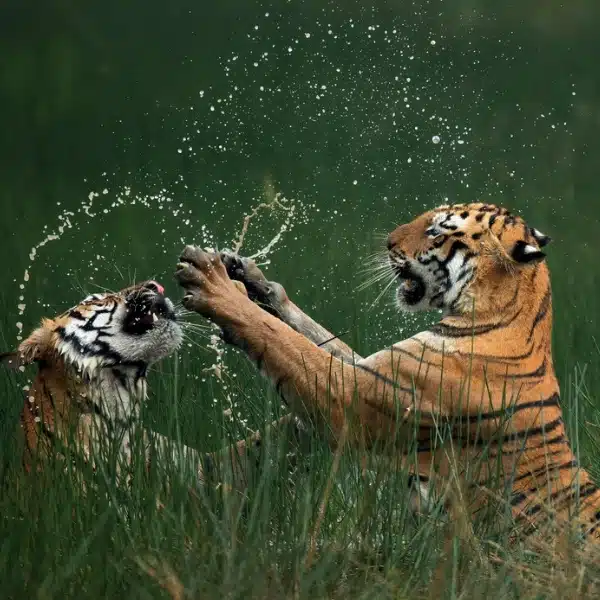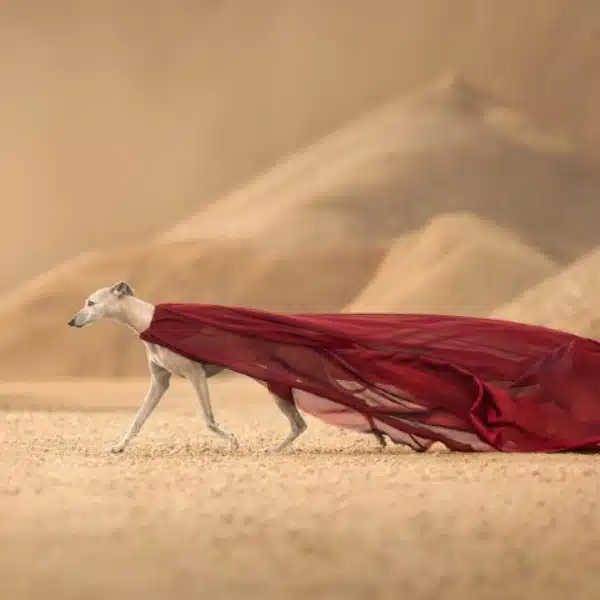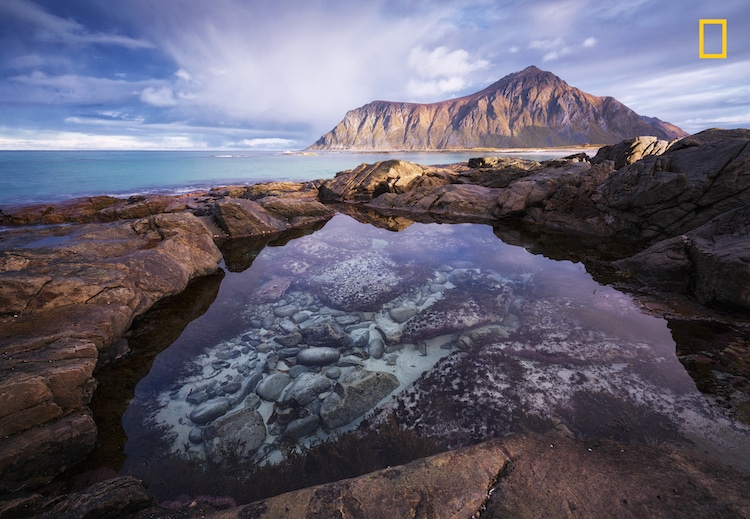
“Enchanted” A tidal pool at Lofoten islands in northern Norway acts as natural eye-catcher. with the high tides around full moon, white sand gets washed into the pool and then the magic unfolds. (Photo and caption by Felix Inden / National Geographic Nature Photographer of the Year contest)
Enjoy taking photographs that tell the stories of animals, lands, and environments? You may consider entering the National Geographic Nature Photographer of the Year Contest, which is accepting entries until November 17, 2017. The magazine has just released some of its spectacular early entries, and as usual, the competition will be fierce.
Photographers are encouraged to submit their best work across four categories—wildlife, landscapes, aerials, and underwater. The grand prize winner will receive $7,500, as well the esteemed opportunity to have their image published in National Geographic. The four category winners will receive a $2,500 prize.
Last year, photographer Greg Lecoeur took home the top prize for his incredible underwater photography. And if these early preview images are any indication, the judges will have a difficult time selecting from the top-notch entries. From sweeping landscapes to close-up animal portraits, there's a wide variety of subjects and styles that demonstrate the glory of nature. Let's look at some of the early entries and the stories behind each photographer's work.
Photographers have until November 17, 2017 to submit entries to the National Geographic Nature Photographer of the Year Contest.
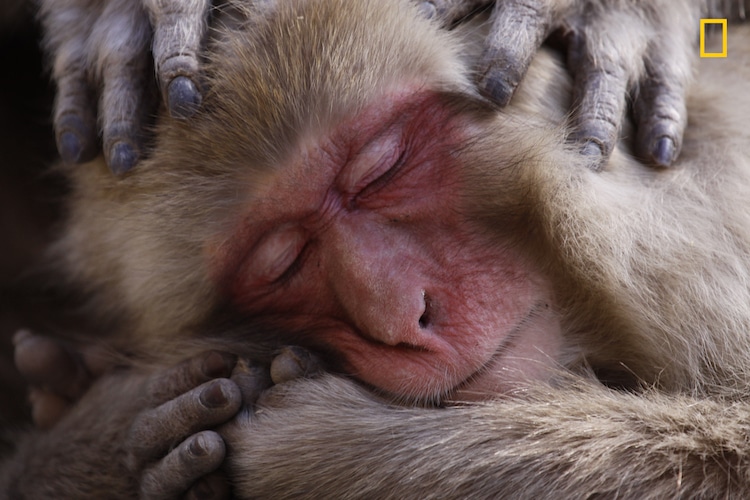
“Macaque Maintenance” A macaque being groomed at the Jigokudani snow monkey park in Japan. The Jigokudani snow monkey park has become a major tourist hot spot, attracting visitors from all over the world hoping to get a glimpse of these amazing creatures huddled together in hot springs. But because of the warmer than usual weather during this time, the macaques were frequently found lazing about on some nearby rocks instead of spending much of their time keeping warm in hot springs. (Photo and caption by Lance McMillan / National Geographic Nature Photographer of the Year contest)
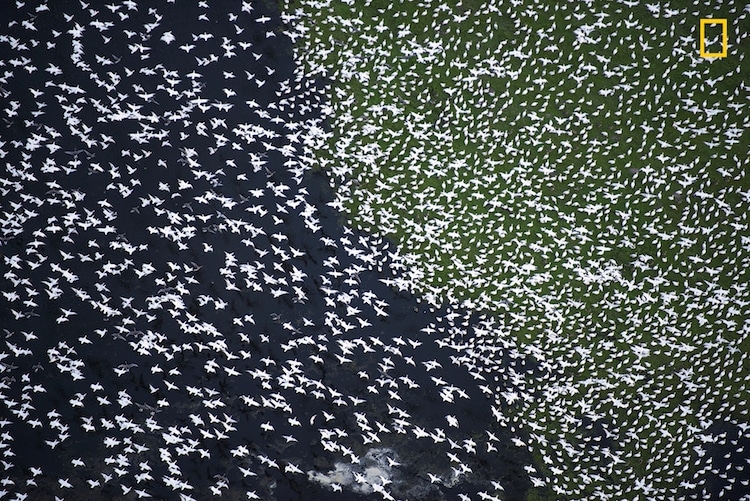
“A thousand birds” Each year between the months of December-March, Northern California becomes the winter home to thousands of migratory birds (geese, egrets, ducks, herons and others). Aerial image (photographed from a plane while flying at 120 miles per hour). (Photo and caption by Jassen Todorov / National Geographic Nature Photographer of the Year contest)
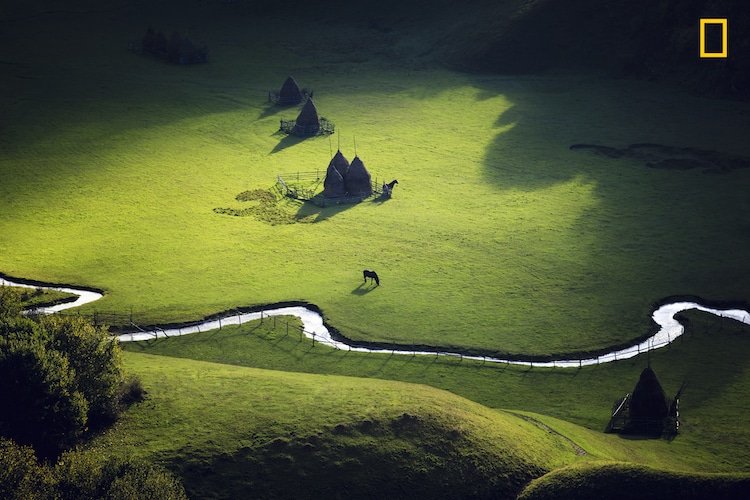
“Heaven on Earth” A magical moment in the morning right after sunrise with 2 horses in Fundatura Ponorului Transylvania, Romania. (Photo and caption by Sebastiaen . / National Geographic Nature Photographer of the Year contest)

“Tadami Line” Tadami line is a JR East line that connects Fukushima prefecture and Niigata prefecture. It is a single-track, non-electrified local line. This line runs through the serene countryside where people live close to the nature in Satoyama, the border area between mountain foothills and flat land. Especially along the Tadami River, the view from the train is stunning. The train goes over a number of bridges passing cherry blossoms in spring, greenery in summer, colored leaves in autumn, and snow in winter. (Photo and caption by Teruo Araya / National Geographic Nature Photographer of the Year contest)
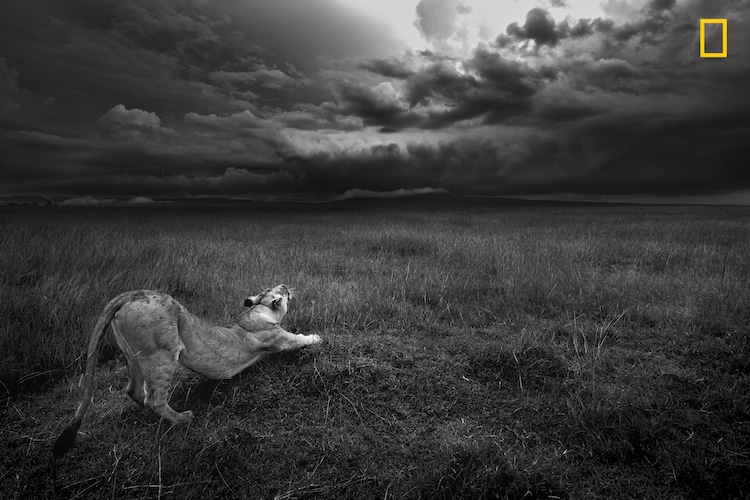
“Étirement” A lioness stretches into the immensity of Masai Mara, Kenya. (Photo and caption by Joël Fischer / National Geographic Nature Photographer of the Year contest)

“Infinite Road to Transylvania #6” This is Cheia (DN1A) road that takes you to Transylvania. Yes, THAT Transylvania, the birthplace of the legendary Count Dracula (Vlad Tepes). The legend says that this shot imagines what he might have seen on his nocturnal flights! Nevertheless, it's a breathtaking view with a magnificent road. (Photo and caption by Calin Stan / National Geographic Nature Photographer of the Year contest)

“Mother Nature's Camo” Gator waiting in Duckweed in New Orleans, LA. This was taken off of a boardwalk so don't worry for my safety. (Photo and caption by Cole Frechou / National Geographic Nature Photographer of the Year contest)
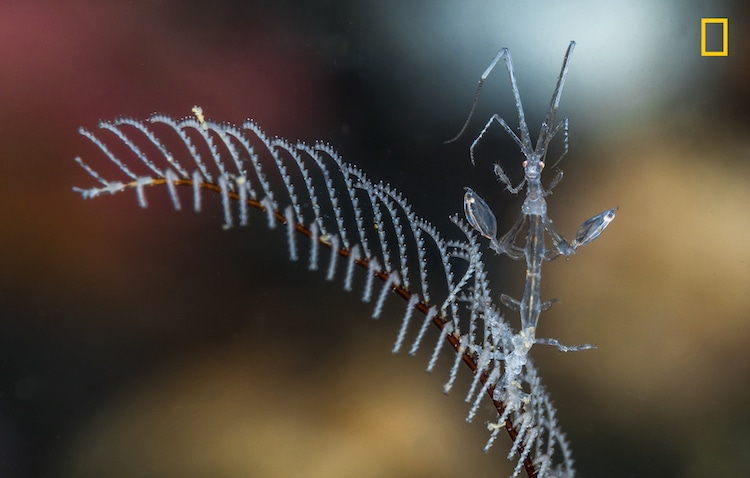
“ALIEN” This is one of my favorite photos of my favorite critter. Shot with a +25 magnifier, it really brings out the detail in this otherwise very small skeleton shrimp. Its face is clear, it's reddish eyes are visible, and the way it faces my camera with its arms wide makes it almost symmetrical. Its clear color matches the hydra that it is living on. Plus the colors in the background really make this an interesting and beautiful photo. Don't think there are aliens on earth? Look no further! (Photo and caption by Adam Silverman / National Geographic Nature Photographer of the Year contest)
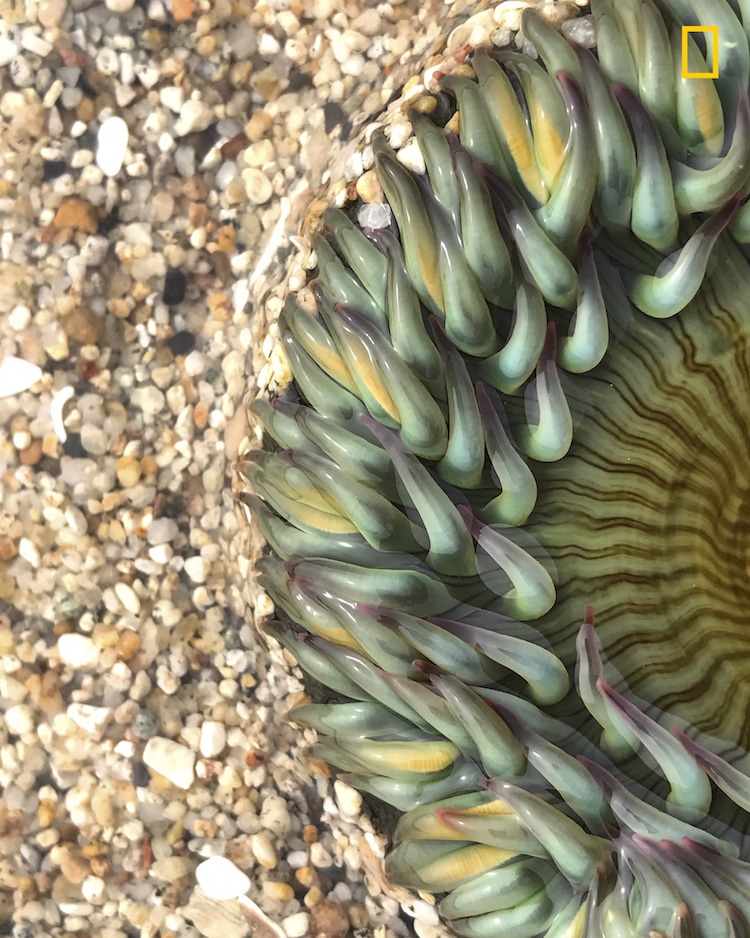
“Anemone” Starburst anemone at Half Moon Bay, California. (Photo and caption by Corbin Morgan / National Geographic Nature Photographer of the Year contest)
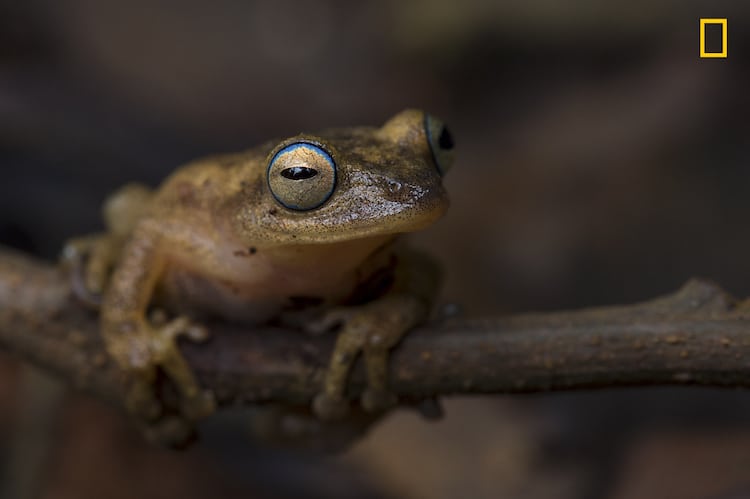
“Coorg yellow bush frog” A Coorg yellow bush frog photographed in the rainforests of Agumbe, Karnataka. The frog was formerly known as blue-eyed bush frog due to the blue ring around its eye. (Photo and caption by Angad Achappa / National Geographic Nature Photographer of the Year contest)
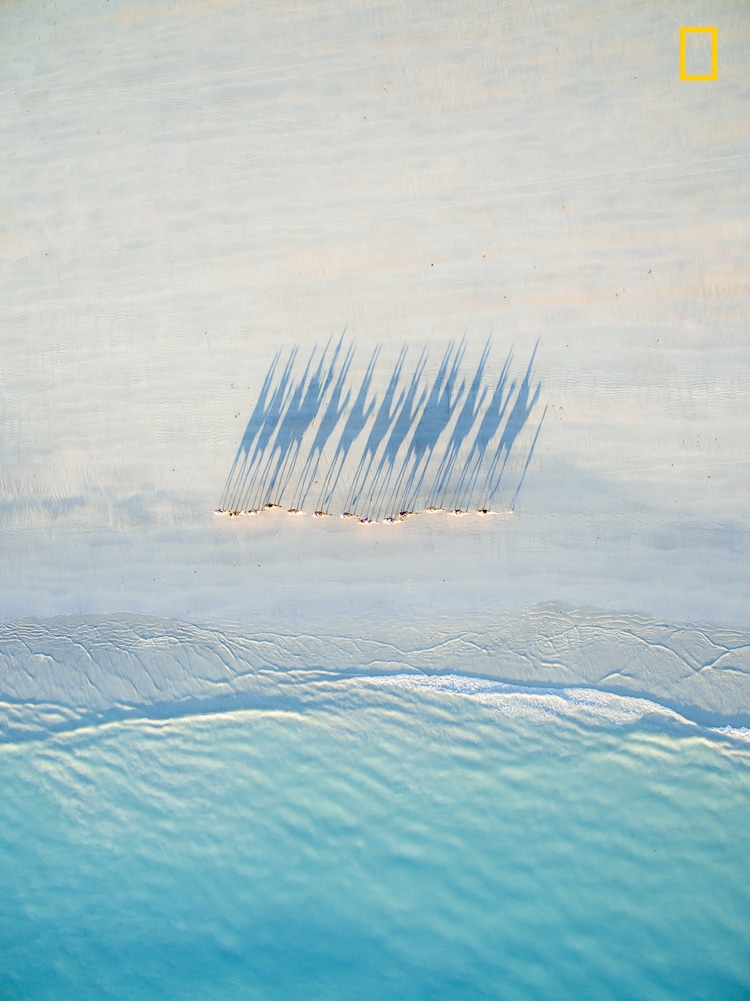
“Cable Beach Camel Caravan” A bird's eye view of a caravan of camels walking along Cable beach at sunset. (Photo and caption by Todd Kennedy / National Geographic Nature Photographer of the Year contest)
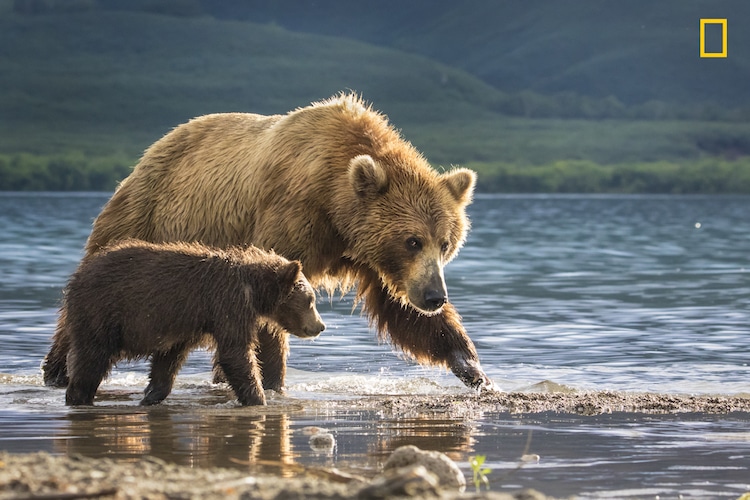
“A mother bear and a cub” The 3 months cub was so cute I almost dropped the camera and ran to hug him. Almost. Mother bear (huge female) was looking at me suspiciously. (Photo and caption by Anat Gutman / National Geographic Nature Photographer of the Year contest)
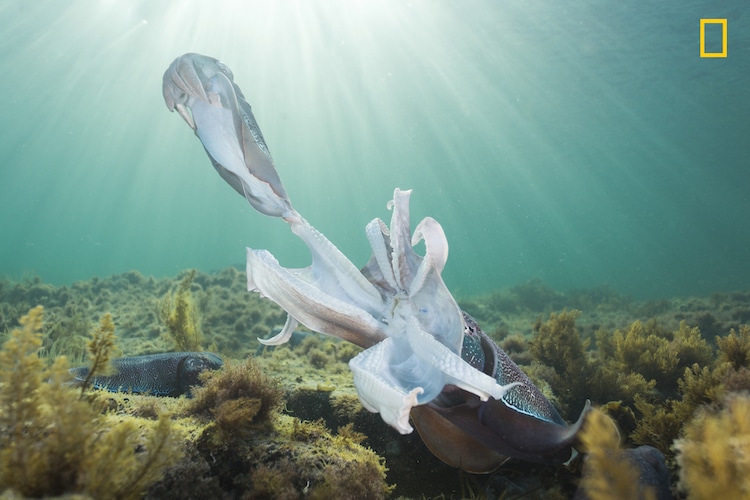
“Lust” This photograph was taken in the cold waters of Whyalla, South Australia during the annual Australian giant cuttlefish aggregation. this annual event sees hundreds of thousands of cuttlefish make their way here seeking to find a mate and is the only place where they are known to aggregate in such large numbers. mating can be aggressive, with males usually dominating the females by 10:1. this is a larger male showing his dominance over the smaller female after they have finished mating. (Photo and caption by Cameron McFarlane / National Geographic Nature Photographer of the Year contest)

“MacKenzie mountains, nwt” Rich colors fading into the grey ruggedness of the Makenzie Mountains approximately 200 km NW of the Nááts'ihch'oh National Park Reserve. (Photo and caption by Alain Boudreau / National Geographic Nature Photographer of the Year contest)
NG Nature Photographer of the Year: Website
My Modern Met granted permission to use photos by National Geographic.
Related Articles:
Amazing Winners of the 2016 National Geographic Nature Photographer of the Year Contest
Stunning Early Highlights of the 2016 National Geographic Nature Photographer of the Year Contest
Awe-Inspiring Winning Images from the 2016 Wildlife Photographer of the Year












































































